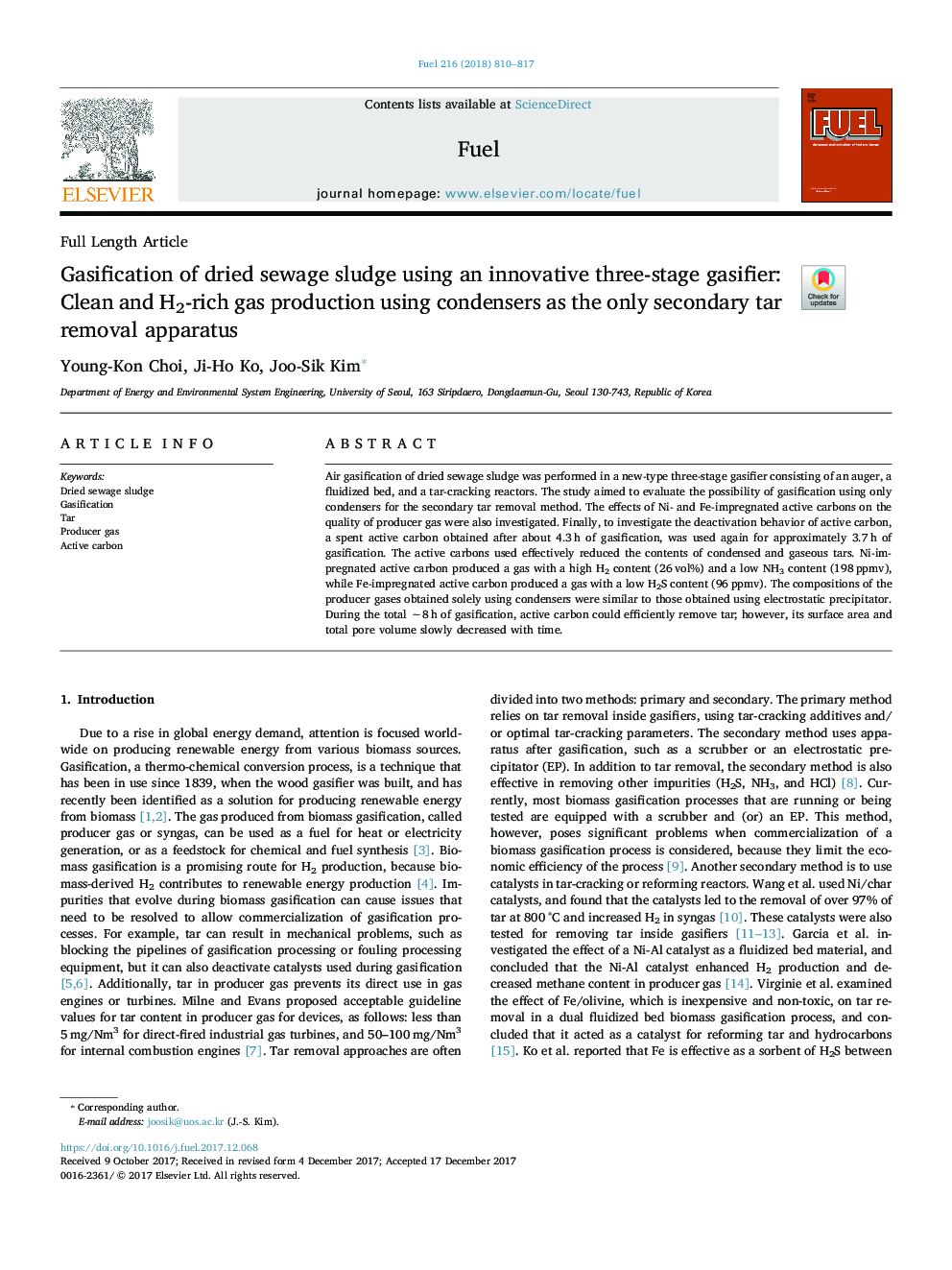| Article ID | Journal | Published Year | Pages | File Type |
|---|---|---|---|---|
| 6632254 | Fuel | 2018 | 8 Pages |
Abstract
Air gasification of dried sewage sludge was performed in a new-type three-stage gasifier consisting of an auger, a fluidized bed, and a tar-cracking reactors. The study aimed to evaluate the possibility of gasification using only condensers for the secondary tar removal method. The effects of Ni- and Fe-impregnated active carbons on the quality of producer gas were also investigated. Finally, to investigate the deactivation behavior of active carbon, a spent active carbon obtained after about 4.3â¯h of gasification, was used again for approximately 3.7â¯h of gasification. The active carbons used effectively reduced the contents of condensed and gaseous tars. Ni-impregnated active carbon produced a gas with a high H2 content (26â¯vol%) and a low NH3 content (198â¯ppmv), while Fe-impregnated active carbon produced a gas with a low H2S content (96â¯ppmv). The compositions of the producer gases obtained solely using condensers were similar to those obtained using electrostatic precipitator. During the total â¼8â¯h of gasification, active carbon could efficiently remove tar; however, its surface area and total pore volume slowly decreased with time.
Related Topics
Physical Sciences and Engineering
Chemical Engineering
Chemical Engineering (General)
Authors
Young-Kon Choi, Ji-Ho Ko, Joo-Sik Kim,
